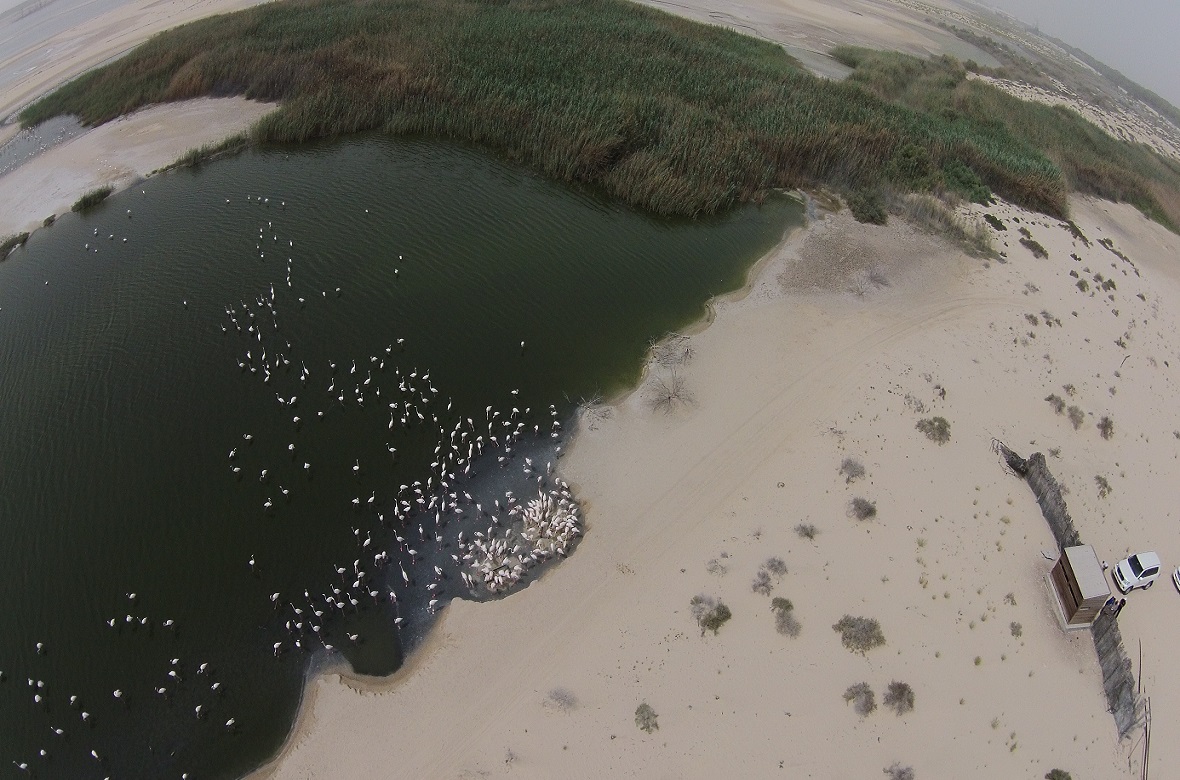The Environment Agency - Abu Dhabi (EAD) celebrated "UAE Innovation Month" by organizing a set of activities and events aimed at educating employees about the importance of innovation and its role in improving institutional performance and increasing productivity.

Abu Dhabi, 24 February 2021: The Environment Agency - Abu Dhabi (EAD) celebrated "UAE Innovation Month" by organizing a set of activities and events aimed at educating employees about the importance of innovation and its role in improving institutional performance and increasing productivity.
It will also be launching during the fourth week, the Innovation and Future Foresight Charter which aims to allocate competent and qualified national cadres to manage creativity and innovation within EAD, by forming work teams. The charter seeks to embrace creators and innovators by motivating them, adopting their creativity and innovative thinking, and applying their vision.
As part of the agency’s continuous efforts to spread a culture of innovation, enrich environmental work and stimulate the launch of innovative environmental initiatives, the set of events and activities will provide successful solutions that contribute to enhancing EAD’s ability to address environmental challenges and achieve its goals and institutional values.
Talking about the launch, Her Excellency Dr. Shaikha Salem Al Dhaheri, Secretary General of EAD, said: “UAE Innovation Month is a motivational and encouraging platform, providing the best and most innovative solutions that address the future. Innovation has become a significant part of our present, and as a way of life in the UAE. At EAD we are always keen to participate in this national event, which aims to consolidate and spread the culture of innovation. We believe that innovation is our best path to ensure the sustainability of our environment in the future.”
“We began this year by implementing our updated corporate strategy that foresees the future and reflects the ambitious vision of our wise leadership. Through doubling our efforts and endeavors, we plan on making a difference and focus heavily on employing innovation tools in designing our vision ahead. We will implement a futuristic approach that adopts innovation as an integrated methodology for the institutional work system, and as part of our culture that is to be instilled in our employees.”
“We believe in the application of innovative and sustainable non-traditional solutions to face environmental challenges, in order to achieve the UAE Centennial goals of 2071. It is our aim to achieve the ambition of our beloved country and establish a sustainable future for current and future generations.”
Since its inception, EAD has been determined to implement initiatives that support innovation, by using modern technology for environmental protection and the conservation of biological diversity. A prime example of this is the Blue Carbon Project, which involves the rehabilitation of mangroves using drone technology.
Another example is the effective use of irrigation methods and innovative standard tools that ensure the industrial and development sector comply with environmental laws. EAD has also developed tools that deal with environmental data, allowing downloading, merging, analyzing, and visualizing environmental data, whilst comparing it with the data of the agency’s monitoring systems. EAD uses the latest technologies to study and monitor biodiversity in the emirate of Abu Dhabi.
EAD has achieved a series of significant milestones over the past 25 years. In 1996, EAD embarked on the introduction of geographic information systems, and in 1998, the agency began using remote tracking via satellites to monitor the Hawksbill and Green turtles. In 2000, the first environmental database was created in Abu Dhabi, and in 2005, EAD began using satellite technology to monitor migratory birds. The agency developed tracking devices for more than 20 flamingos, in order to understand their patterns of movement, migration and use of habitats.
In 2007, the Abu Dhabi aquaculture project for the cultivation of high-quality pearls was launched. Today, the project produces between 80,000 to 1 million oysters annually. Additionally, air quality monitoring networks have also been launched, which provide an accurate picture of air quality with the ability to compare data and information with the highest international indicators and standards.
2009 witnessed the construction of the largest strategic water reservoir in the world, with the latest technology in Abu Dhabi. In 2010, EAD began developing the "Environmental Vision 2030" which explored the environmental future. Shortly after, in 2015, the first Aquatic Agriculture Centre was built in Abu Dhabi, contributing to food security, in cooperation with partners. In the same year, Lysimeter technology was used to determine the water needs of Arak trees, which led to a 35% reduction of the amount of water used in irrigation of forests in the emirate. This technology has also helped cultivate alternatives to more productive and water-efficient crops.
In 2016, the first Solar Desalination Center was built on a regional level, and in 2017, the first team for innovation and future foresight was formed at EAD. In 2020, the first environmental observatory was launched in the UAE and the first methodology for environmental accelerators was launched on the level of the emirate of Abu Dhabi. Furthermore, the updated version of the Suggestion System as part of the Innovation Gate was launched. Mohammed Bin Rashid Centre for Government Innovation also selected the "Dugong Research Toolkit" project as one of the most innovative projects in 2020, and also witnessed the start of using artificial intelligence techniques in assessing soil quality.
